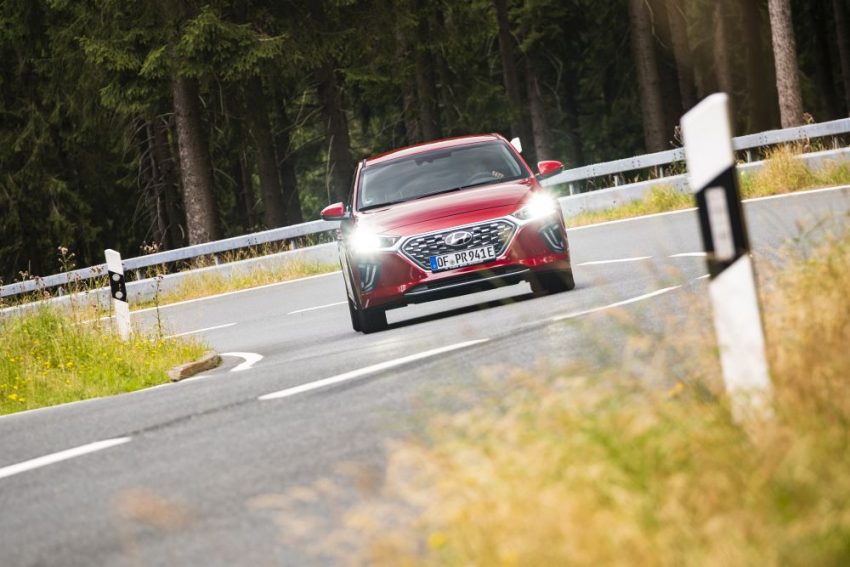
10.6.2020. For three years, Hyundai’s eco-friendly vehicles is a leader in the development of.
This is also the (CAM) of the center of Automotive Management 2020 Report recently published dvigateli electro, Germany, EU, USA and China electric vehicles in the innovation of market events and trends were examined. Hyundai improved compared to the previous year and in two places in the third row here, is.
This year, the company gradually widened the supply environmentally friendly vehicles, electric mobility, celebrates 30 years:
The first electric vehicles from 1990 – Hyundai Development begins
Fell at the beginning of the 90s, electric vehicles, and in 1991 presented the company with the launch of Hyundai the Hyundai Sonata will be the first electric battery electric vehicle development. The Sonata is a sedan concept based on lead-acid battery and 60 km/h and maximum speed has been given to a range of 70 miles.
This over the years-acid battery follow: 1992 Hyundai Excel-a range of 100 miles and 100 km/h maximum speed, 1993, 140 km and 120 km/h maximum speed electric vehicle with a range-based for 140 miles of range and 120 km/h with a maximum speed of Hyundai Sonata electric vehicle in 1995 and the Second Bank of the S-Coupe-Hyundai with lead based electric vehicle electric vehicle concepts made more then.
In South Korea, Hyundai Namyang research and Development Center for opening in 1995, is a very important step in the development of electric vehicles. Now, Nickel-metal hydride batteries to electricity the concept of Accent, for example, was used for the first time. The range of the vehicle grew 390 km and 140 km/h.
At the same time, the first tests were conducted with hybrid drives Hyundai. The company, FGV-1 concept at the Seoul Motor Show in 1995, the first hybrid vehicle was presented to the public.
2000 fuel cell technology in – progress
1998 Hyundai vehicles began with the development of fuel cells. Two years later, the first prototype of a fuel cell vehicle, the Santa Fe fuel-cell electric vehicle concept was introduced. -75 kW was equipped with a fuel cell-hydrogen fuel cell vehicle and the fuel tank with 350 bar 230 has located miles away on the tank first.
A new lithium-polymer battery Geneva Auto Salon 2004 Hyundai Tucson FCEV fuel cell concept announced second generation. Technical developments, including a fuel cell stack and a hydrogen tank 152 liters of 80 kW in a number of found ranges of 300 miles were obtained. In addition, the Tucson FCEV cold startup had a talent, and at the same time, can be used at temperatures up to -20 degrees of danger.
The production model powered by an internal combustion engine with liquefied petroleum gas in 2009, with the launch of alternative propulsion systems Angelina LPI hybrid, Hyundai’s innovation leadership – the world’s first hybrid vehicle that was claimed. LPI hybrid uses a lithium-polymer battery with Hyundai’s first car was.
2010 – Hyundai is a pioneer in the mobility of the future
Two years of extensive research and serial production of innovative concepts for electric vehicles since 2010, Hyundai.
In the month of September of the same year, Hyundai front blue vehicle produced in Seoul, the first pure electric range was announced for the South Korean market only. Based on the Hyundai i10 and 130 km/h 140 miles distance and speed are. The battery installed in the vehicle a 16.4 kWh lithium-polymer-six hours after full charge was left.
In 2011, the Hyundai Sonata Hybrid at the Los Angeles Auto Show has already announced the start of sales in 2008. Sonata Hybrid’s improved fuel consumption and reduced emissions-polymer batteries at the same time, the first hybrid vehicle Hyundai Blue-drive technology ion, the first full hybrid vehicle with lithium was not traditional.
With the Ix35 Fuel Cell vehicle, the world’s first commercial production fuel cell vehicle, Hyundai is an important milestone in the history of the company in 2013 put. Ix35 had a power of 100 kW, and 24 kW 5.64 kg hydrogen tank and a lithium-polymer battery is equipped with. A tool of persuasion as well as a series of 600 kilometers with a quick refueling.

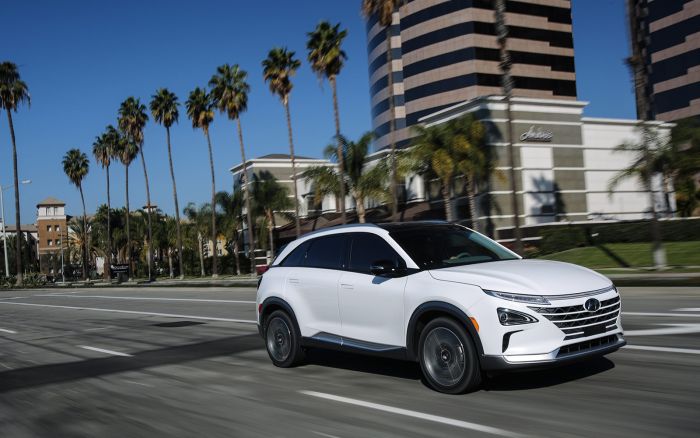
Hyundai ix35 Fuel Cell Hyundai (photo:)
2016 Hyundai Ioniq developed for three alternative drive systems introduced the world’s first vehicle.
This electric version Ioniq 0 g/13,8 km; combined CO2 emissions combined in kWh/100 km (power consumption) of 200 kilometers 28 kWh lithium-ion battery and has a range. Lightweight construction new Hyundai I-oniq is another characteristic feature.
In the case of steel and aluminum car body, thus the weight of the vehicle to reduce fuel consumption are combined. In addition, recycled and organic materials.
Nexus Hyundai Hyundai year kg H2/100 km fuel consumption (hydrogen) Sunday: urban as 0, 77; out-of-town second-generation fuel cell vehicle in 2018 brought 5.01; 0,84 together. G/km CO2 emissions: 0) joined in.

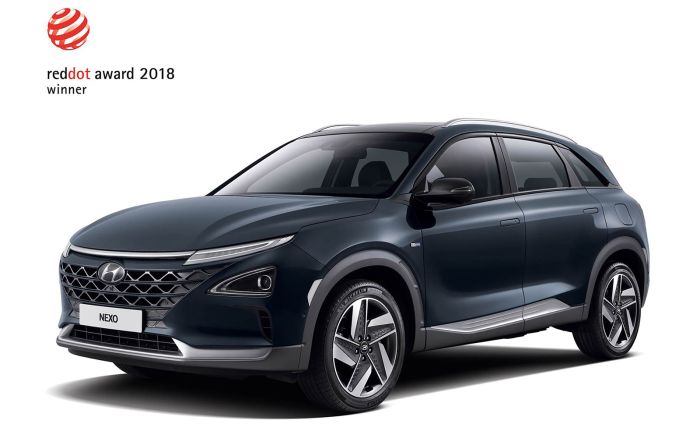
(Photo: Hyundai)Hyundai Nexus
Hyundai’s flagship has a range of 666 miles smart and autonomous with the latest technological features such as advanced driving and Support Systems combines a clean driving mobility.
In the same year, Hyundai Series electric Kona is the world’s first all-electric SUV has announced. A fully electric vehicle with a range of 484 miles on a single charge battery is available and provides two available versions 5 64 kWh.

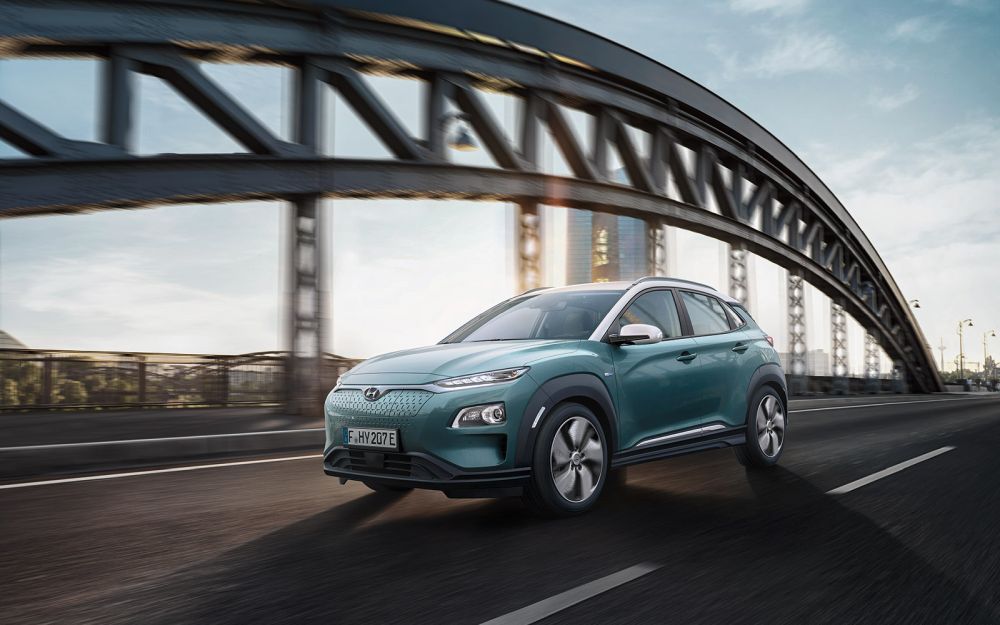
(Photo: Hyundai)Hyundai Electric Kona
Electro mobility-2020
After 30 years of innovation for the development of environmentally friendly vehicles, Hyundai Hybrid, an important alternative drive types in the series, 48 volt Hybrid, electric and fuel-cell Hybrid, plug-in the only manufacturer that offers worldwide.
2020 Hyundai Electric Mobility for years to come. By the end of the year, Hyundai Europe, electro-range plans at the end of three. In Germany, interest is continuously eco-friendly models. Hyundai to sell so last year in Germany, more than 10 thousand drivers of alternative vehicles it was possible. In addition, the company is progressing electric race cars and for commercial vehicles, in 2005, three in Europe and one of the largest providers of electric vehicles wants to be.
Fuel consumption and emission figures
G/km the Hyundai Ioniq, Electric combined kWh/100 km power consumption: 13,8; 0 CO2 emissions; CO2 efficiency Class: A+combined.
Kona Electric for Hyundai 602: 30 program I. for combined kWh/100 km power consumption, g/km 0 CO2 emissions; CO2 efficiency Class: A+combined.
In accordance with the values specified wlkp projected fuel consumption and CO2 emission-measurement method were determined.
(Kg H2/100 km for the urban Nexus as 0, 77 Hyundai; out-of-town 5.01 hydrogen fuel consumption 0,84 together. G/km combined CO2 emissions of 0. CO2 efficiency Class: A+.
Projected fuel consumption and CO2 emissions NEDC WLKP measuring the appropriate method specified, and the converted values was determined.

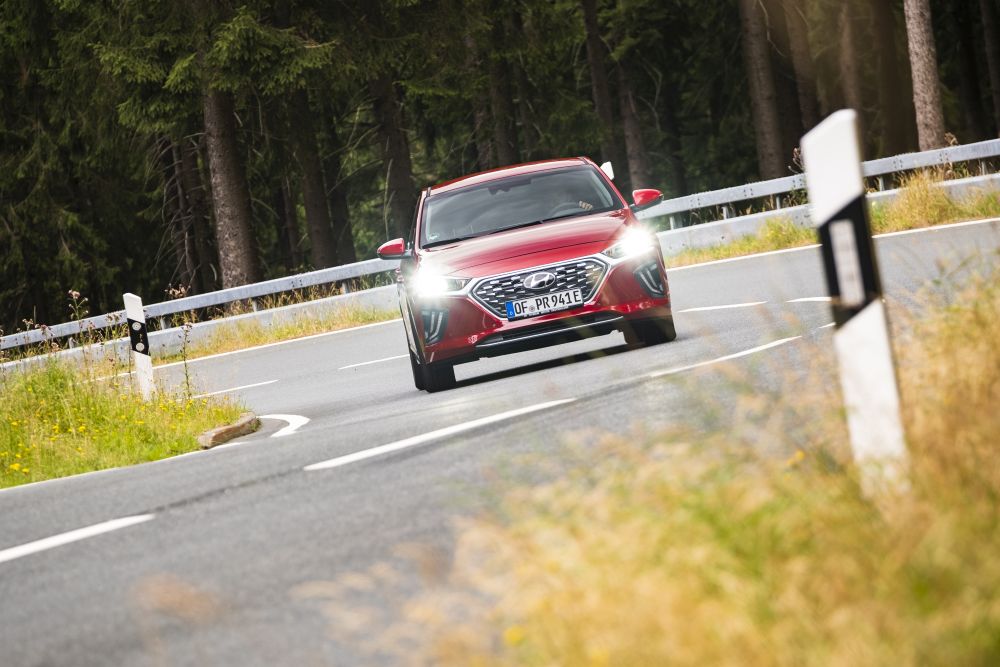
Hyundai Ioniq Plug-In Hybrid (photo): a Hyundai